What shape of greenhouse is better: detailed analysis, technical details and comparison

You've decided to create your own greenhouse paradise, where fragrant herbs, succulent vegetables, or exotic flowers will delight you year-round. But here's the problem: the market offers such a variety of shapes and designs that it's dizzying! Arched, gable, wall-mounted, teardrop-shaped... Which one will become a true fortress for your plants, and which will bring more trouble than benefit? After all, the shape of a greenhouse isn't just a matter of aesthetics; it's the foundation for the future microclimate, ease of maintenance, durability, and, ultimately, your harvest. Let's explore this architectural diversity together, delve into the technical details, and discover which greenhouse shape is truly right for you!
Why is greenhouse shape so important?
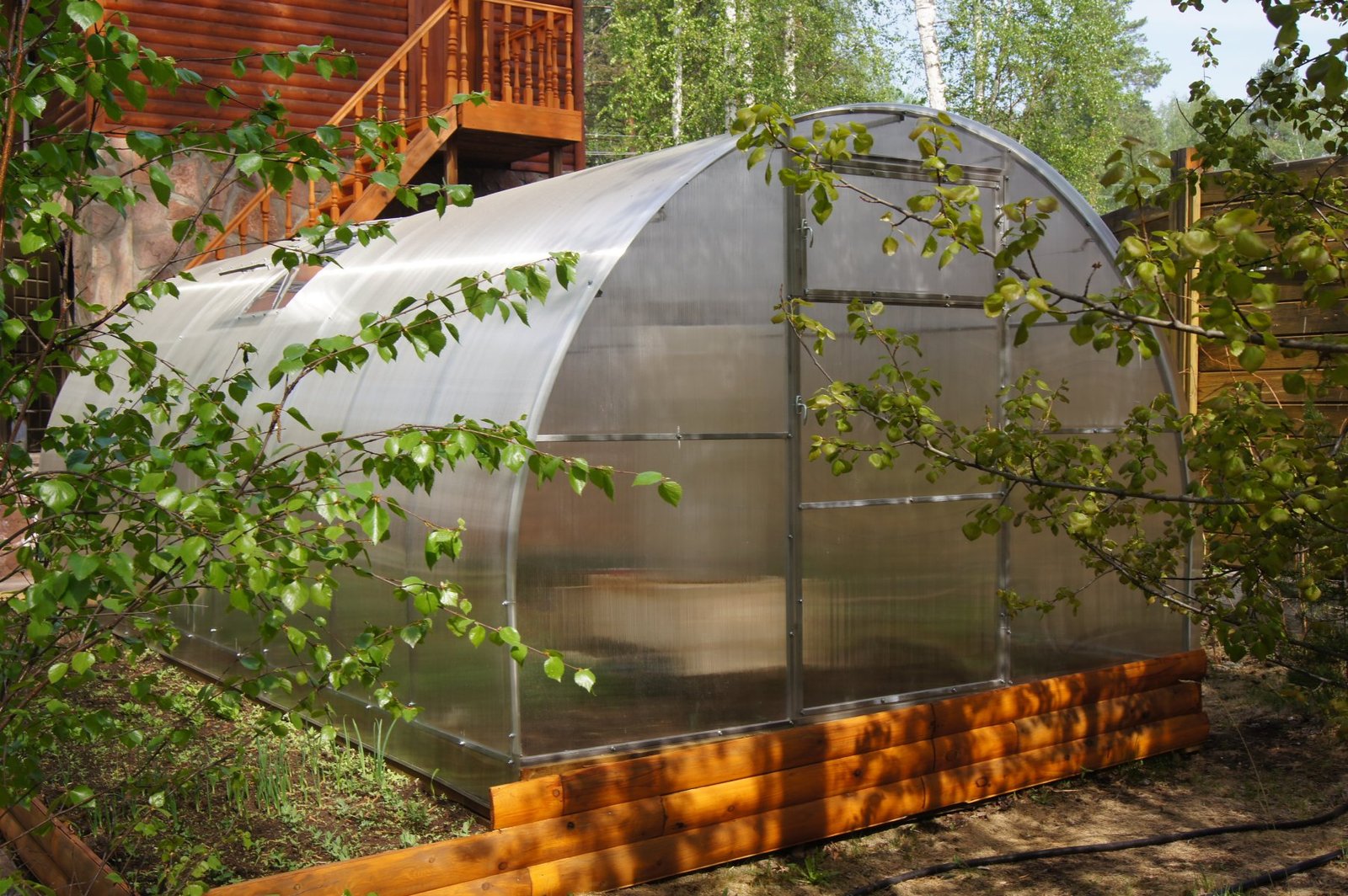
Choosing a greenhouse shape is one of the first and most important decisions a future greenhouse owner will have to make. This choice directly affects:
- Light: Different forms transmit and distribute sunlight differently, which is critical for plant photosynthesis.
- Strength and stability: The ability of a structure to withstand wind and snow loads is largely determined by its shape and frame materials.
- Microclimate: The shape affects air circulation, heat and humidity distribution inside the greenhouse, and the possibility of effective ventilation.
- Space efficiency: Some shapes allow for more efficient use of interior space.
- Cost of materials and construction: The complexity of the design, the type of frame and covering directly affect the costs.
- Durability: Depends on materials and proper assembly.
- Ease of plant care: Access to plantings, possibility of installing equipment (irrigation systems, heating, shelving).
- Foundation requirements.
- Aesthetic appearance: The greenhouse should fit harmoniously into the landscape of the site.
An incorrectly chosen shape can lead to a lack of light, overheating or hypothermia, ventilation problems, snow accumulation, deformation of the frame and, as a result, a decrease in yield and even death of plants.
A review of popular greenhouse designs: pros, cons, and technical features
Let's look at the most common types of greenhouses today.
Arched (semicircular) greenhouse
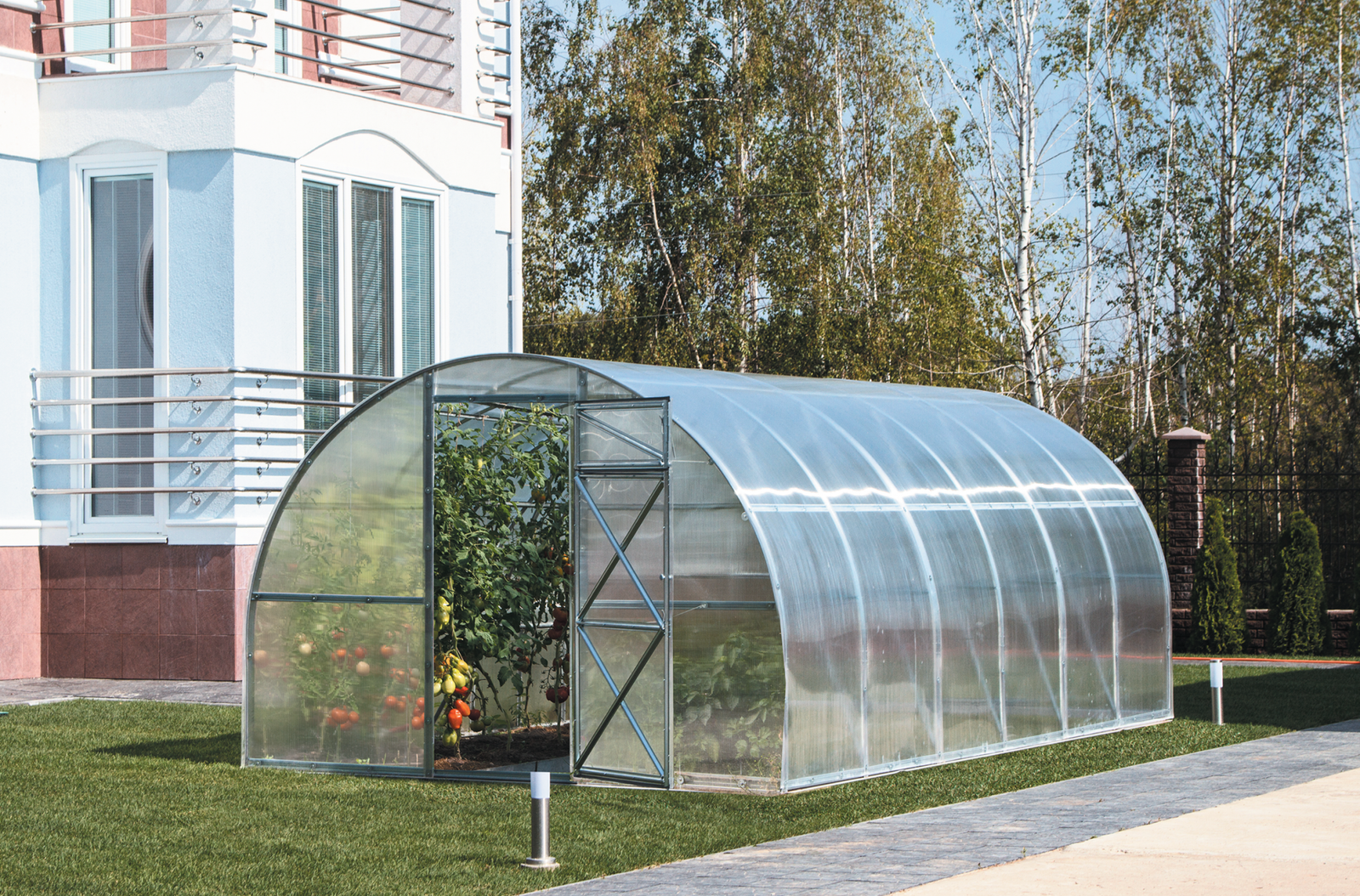
This is perhaps one of the most popular and recognizable shapes, resembling a tunnel with a semicircular vault.
- Description: The frame is made of arched elements connected by longitudinal ties (stringers).
- Technical specifications:
- Frame: Most commonly, galvanized steel profile tubing (e.g., 20x20 mm, 20x40 mm, 40x40 mm, wall thickness 1-1.5 mm) or round tubing. Less commonly, aluminum profile is used (lighter, rust-resistant, but more expensive). The arc pitch is typically 0.65 m, 0.67 m, or 1 m. For snowy regions, a pitch of no more than 0.67 m and a reinforced profile are recommended.
- Covering: Cellular polycarbonate (4-6 mm thick for seasonal, 8-10 mm for year-round; UV protection on one or both sides is required). Greenhouse film (single-layer, multi-layer, light-stabilized, reinforced – service life from 1 to 5-7 years).
- Foundation: For small and lightweight structures (especially film-based ones), use lightweight timber treated with an antiseptic or simply anchored into the ground with special T-shaped frame ends. For larger and more permanent structures, use a point foundation (piles, blocks) or a shallow strip foundation.
- Ventilation: Standard: vents and doors at the ends. For improved air circulation, additional side or roof vents are recommended, which can be equipped with automatic vents.
- Advantages:
- Good light transmittance and light diffusion (especially with polycarbonate).
- Excellent resistance to wind loads thanks to the aerodynamic shape.
- Ease of snow sliding (given a sufficient slope angle and smooth surface).
- Relative simplicity and speed of installation.
- Cost-effectiveness in terms of frame and covering materials.
- Flaws:
- Limited vertical space near the walls makes it difficult to grow tall plants along the edges and for the gardener to work.
- The difficulty of organizing effective overhead ventilation without special solutions.
- It is possible that some of the sun's rays will be reflected in the morning and evening.
- The difficulty of installing shelves and racks directly against the side walls.
- Recommended use: Ideal for regions with strong winds. Suitable for growing low- and medium-sized crops. When choosing, pay attention to the frame's strength (metal thickness, arc spacing, and the presence of reinforcements).
Gable greenhouse (house-like)
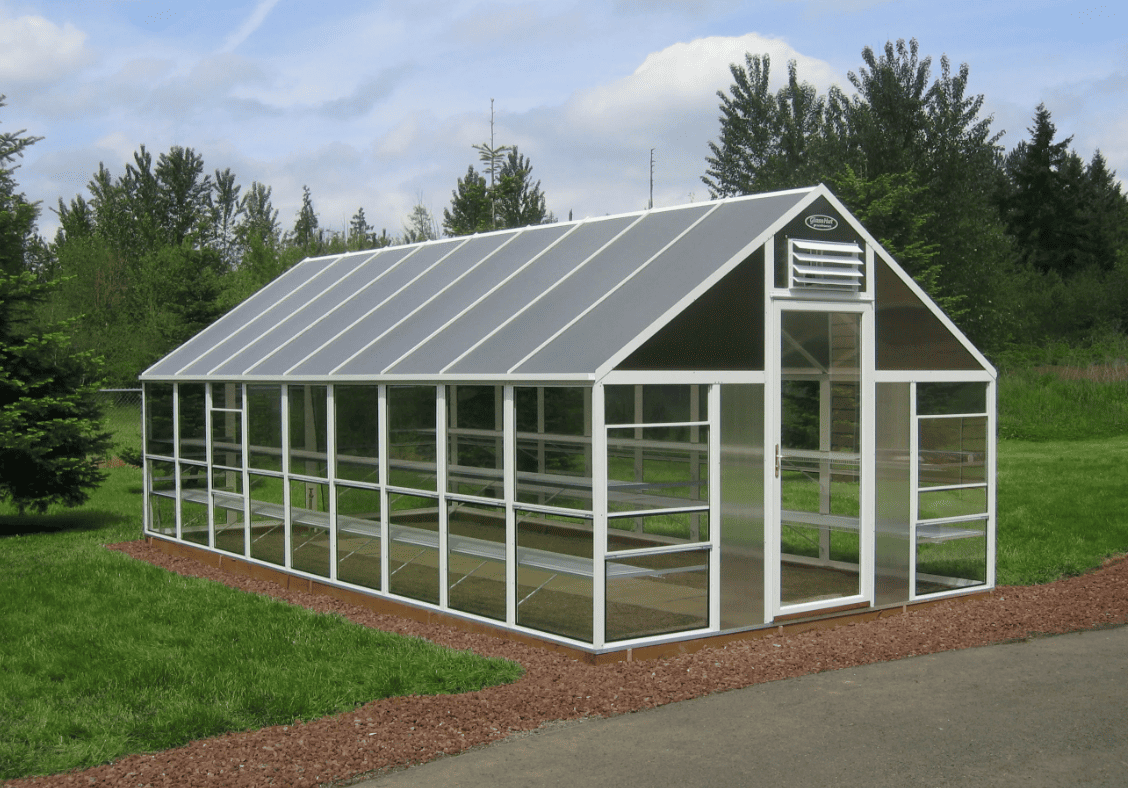
A classic shape reminiscent of a regular house with two pitched roofs.
- Description: It has vertical walls and a roof made of two inclined planes converging at the ridge.
- Technical specifications:
- Frame: Metal (steel profile pipe, angle – requires anti-corrosion treatment or galvanizing), wooden (timber, board – requires careful antiseptic treatment and regular maintenance).
- Covering: Glass (4 mm thick, classic, high light transmittance, durable, but fragile, heavy, requires a strong frame and sealed joints), cellular polycarbonate (6-10 mm), film.
- Foundation: A more substantial foundation is required than for an arched one, especially for glass or for large structures – strip (concrete, brick) or columnar with a grillage.
- Ventilation: It is easy to organize effective ventilation using vents in the walls and on the roof slopes (ideally, ridge vents along the entire length).
- Advantages:
- Maximum use of interior space thanks to vertical walls.
- Excellent illumination, especially when the ridge is oriented from north to south (uniform illumination of the sides) or from east to west (maximum morning and evening sun).
- Simplicity of organizing multi-level ventilation.
- Good snow removal at a roof pitch of 25-35°.
- High strength and reliability with high-quality execution of the frame and foundation.
- Convenient installation of racks, shelves, and garter systems.
- Flaws:
- Higher cost of materials and installation compared to arched.
- More joints requiring sealing.
- Increased windage due to vertical walls requires reliable fastening to the foundation.
- Recommended use: An excellent choice for growing tall crops and using shelving. Suitable for year-round use with proper insulation. Recommended for regions with significant snow loads.
Single-pitched (wall-mounted) greenhouse
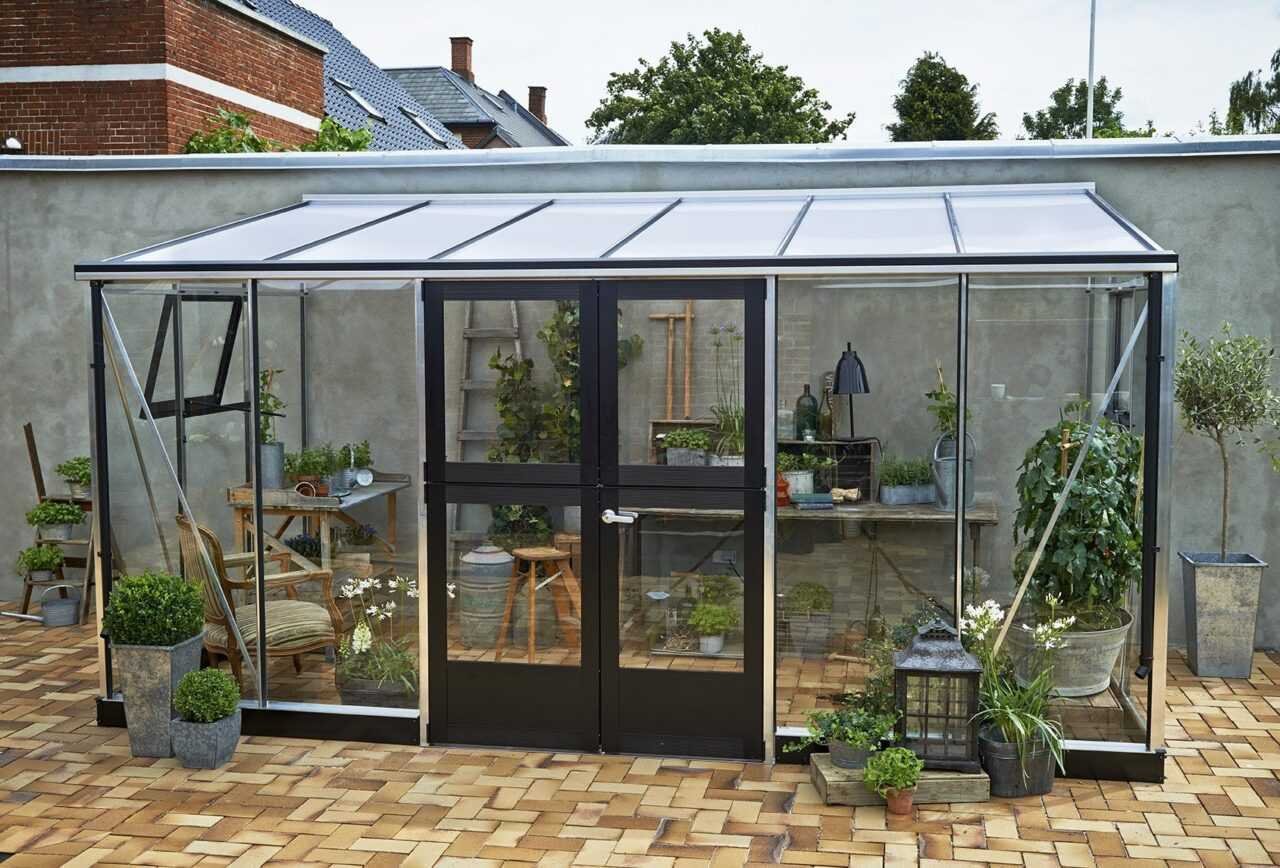
One side of such a greenhouse is attached to the wall of a house, barn or other permanent structure.
- Description: It has a single sloping roof plane. The building's wall serves as one of the greenhouse's walls.
- Technical specifications:
- Frame: Metal or wood. Secure attachment to the wall of the main building.
- Covering: Polycarbonate, glass.
- Foundation: Often tied to the main building's foundation or constructed as a strip foundation. Waterproofing the joint between the greenhouse and the house wall is important.
- Ventilation: Vents in the side walls and roof. It is important to ensure adequate air flow.
- Advantages:
- Saving on materials (one wall is ready).
- Saving on heating due to heat from the wall of the house.
- Convenient connection of utilities (electricity, water).
- Protection from cold winds (if the house wall is north-facing).
- Compact, ideal for small areas.
- Flaws:
- Limited light (shadowing from the house wall). Orientation is critical – south, southeast, or southwest facing.
- Dependence on the main structure. Risk of moisture damage to the house wall, the need for high-quality waterproofing.
- The problem of snow and ice sliding from the roof of the main building onto the roof of the greenhouse.
- Limited cross-ventilation options.
- Recommended use: For small areas, growing seedlings, greenery, heat-loving flowers, and as a winter garden. Requires careful planning of placement and waterproofing.
Teardrop-shaped (arrow-shaped) greenhouse
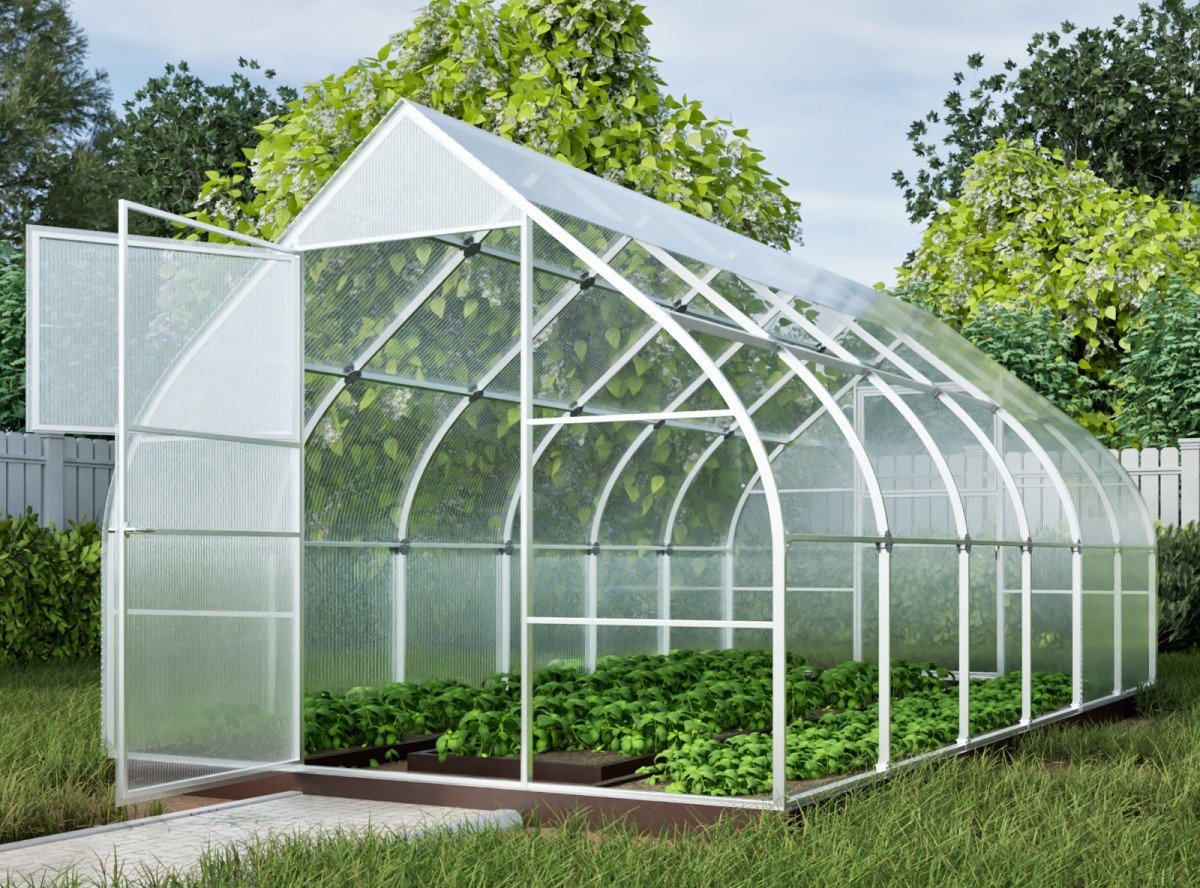
It is distinguished by its distinctive roof shape, reminiscent of a teardrop or pointed arch. It is often associated with Mittlider greenhouses, which feature a distinctive ventilation system.
- Description: The arch has a pointed shape, which ensures better snow drainage.
- Technical specifications:
- Frame: Usually metal (galvanized profile pipe). The design is more complex than a simple arched frame.
- Covering: Cellular polycarbonate.
- Foundation: Strip or pile foundation is recommended to ensure stability.
- Ventilation: Classic "drop" greenhouses have end vents. Mittlider greenhouses feature multi-level slopes with transoms (vents) running the entire length of the roof, ensuring effective natural air exchange (warm air exits from the top, and cool air enters from the bottom).
- Advantages:
- Increased strength and excellent resistance to snow loads (snow practically does not linger).
- Good wind resistance.
- Excellent illumination.
- A highly effective ventilation system for greenhouses according to Mittlider, minimizing temperature fluctuations and condensation.
- Flaws:
- A more complex and expensive design compared to the arched one.
- Requires precise calculations and high-quality installation.
- Recommendations for use: An excellent choice for regions with heavy snowfall and strong winds. Greenhouses with Mittlider ventilation are valued for creating an optimal microclimate.
Polygonal (geodesic dome) greenhouse
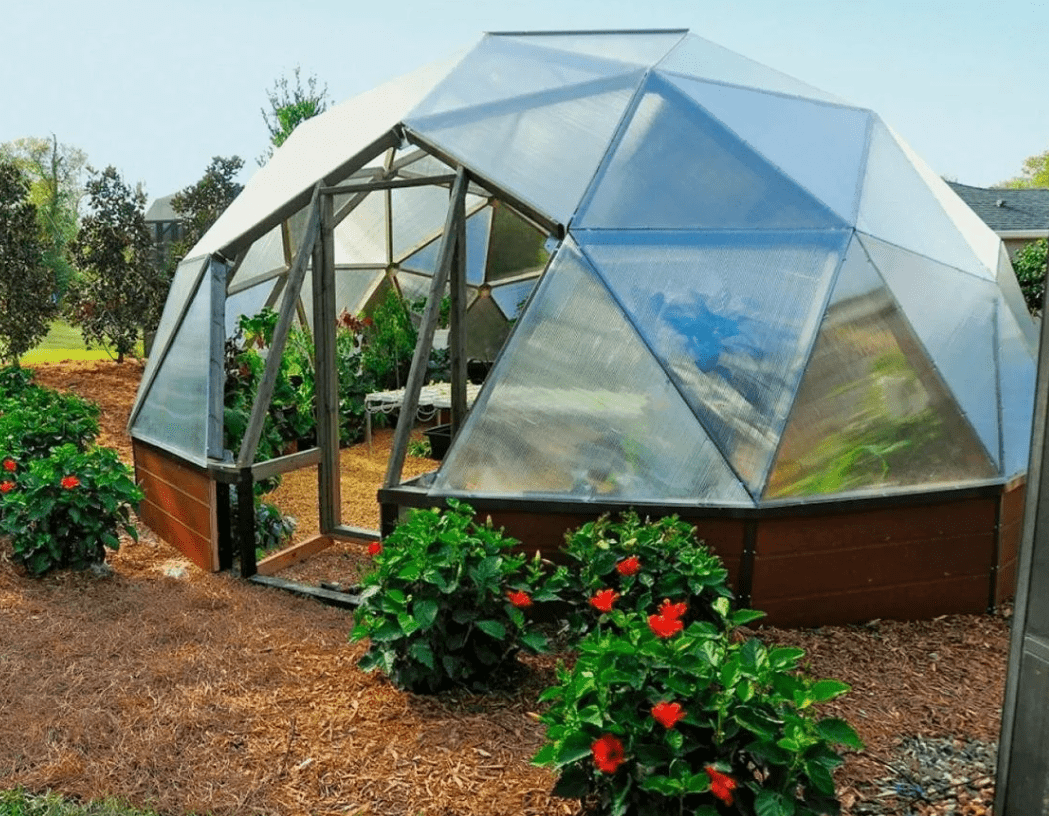
A very impressive and unusual design consisting of many triangular or polygonal elements.
- Description: The frame is assembled from relatively short rods (metal or wood) that form a strong spatial structure. Connectors play a key role.
- Technical specifications:
- Frame: Steel or aluminum pipes, wooden beams.
- Covering: Cellular polycarbonate sheets cut into segments, glass, special film.
- Foundation: Point foundation under the support nodes or light strip foundation around the perimeter.
- Ventilation: Vents built into dome segments, possibly a top vent.
- Advantages:
- Very high strength and resistance to wind and snow loads (the load is evenly distributed).
- Optimal light distribution throughout the day.
- Good natural air circulation.
- Spectacular, futuristic appearance.
- Flaws:
- High complexity of design and assembly, requires precision.
- Significant cost of materials and installation.
- Difficulty sealing numerous joints.
- Not always a rational use of internal space due to the spherical shape (difficulties with straight beds and standard shelving).
- Recommended use: For enthusiasts who value originality, high durability, and are ready for a challenging project. Can be used as a greenhouse, conservatory, or for growing various crops.
Comparative table of greenhouse shapes
| Characteristic | Arched | Gable roof (house-shaped) | Single-pitched (wall-mounted) | Teardrop-shaped (lancet-shaped) | Geodesic dome |
| Illumination | Good, absent-minded | Excellent (with right orientation) | Satisfactory (depending on the wall) | Excellent | Optimal, uniform |
| Snow resistance | Average (depending on the frame) | High (at a slope of >25°) | Medium (risk from the roof of the house) | Very high | Very high |
| Wind resistance | Very high | Medium (requires fastening) | Middle (protected by a wall) | Tall | Very high |
| Ventilation efficiency | Satisfactory (additional vents needed) | Very good | Satisfactory | Excellent (esp. Mittlider) | Good |
| Use of space | Average (sloping walls) | Maximum | Good (but limited) | Good | Specific (sphere) |
| Difficulty of installation | Low/Medium | Medium/High | Average | Tall | Very high |
| Cost (approximate) | Low/Medium | Medium/High | Low/Medium | Medium/High | High/Very high |
| Durability (frame) | Depends on the metal/arc pitch | High (with quality materials) | Depends on the materials | Tall | Very high |
| Foundation | Easy/Not required | Required, thorough | Required | A thorough cleaning is recommended | Required |
Factors to consider when choosing a greenhouse shape
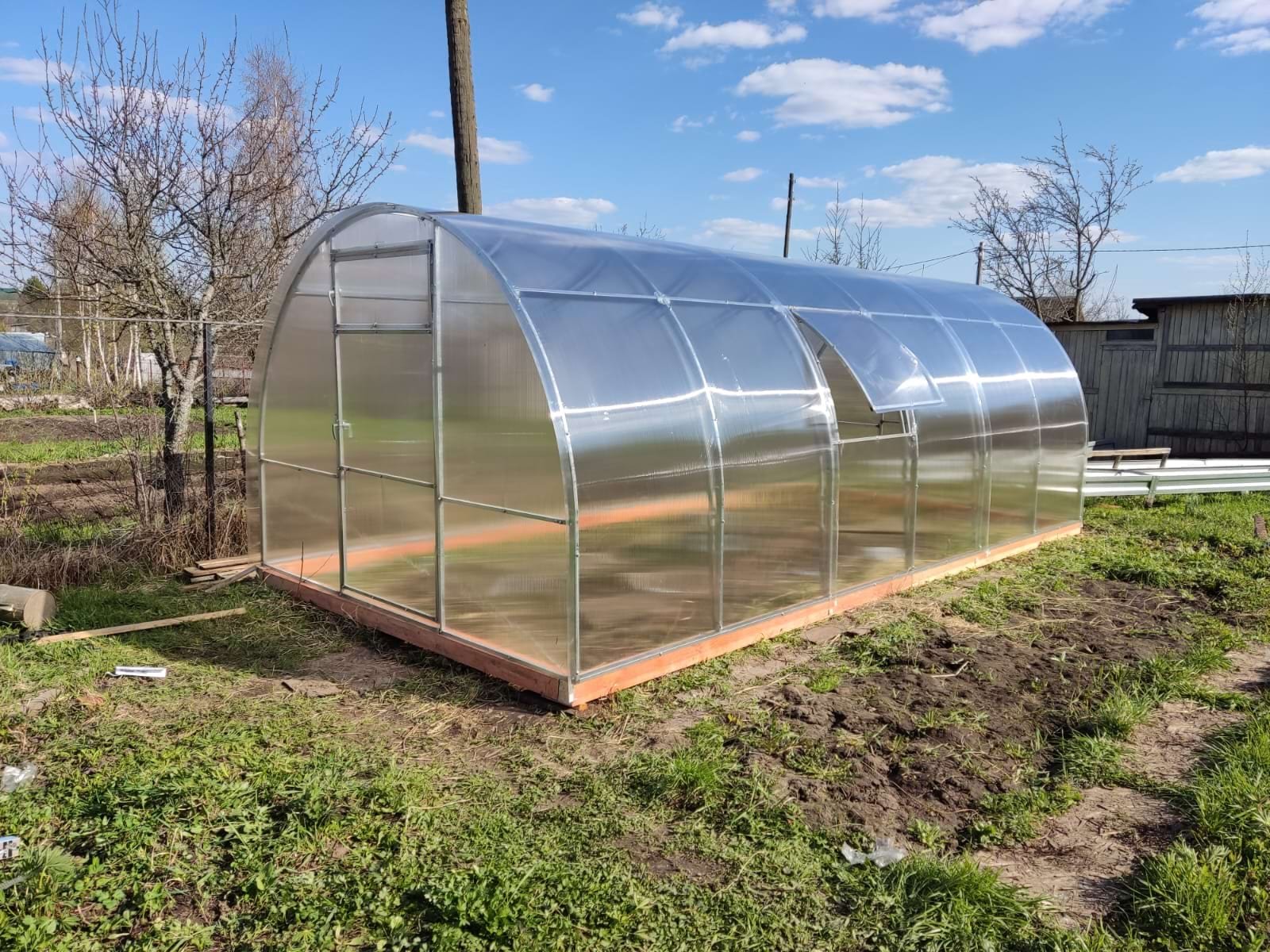
To avoid making a mistake in your choice, consider the following points:
- Climate conditions of your region:
- Snow loads: In snowy regions, gable-roof (with a steep slope), teardrop-shaped, or dome-shaped greenhouses are preferable. Arched greenhouses require a reinforced frame or regular snow removal.
- Wind loads: Arched, teardrop-shaped, and dome-shaped structures are the most wind-resistant. Gable and wall-mounted roofs require a secure foundation and anchorage.
- Solar radiation intensity: In southern regions, additional shading may be required for any shape. In northern regions, maximum light transmission is important.
- Types of plants grown:
- Tall crops (tomatoes, cucumbers on a trellis, grapes): Gable greenhouses with high vertical walls are best suited.
- Low-growing and medium-growing crops (peppers, eggplants, greens, strawberries): You can use arched or teardrop-shaped ones.
- Seedlings, flowers on shelves: Gable or wall-mounted ones will provide convenient placement.
- Plot size and orientation:
- Small area: Wall greenhouse or compact arched/gable roof greenhouse.
- Orientation: For maximum light, it's best to orient a gable-roof greenhouse with its long side facing east to west (and its ridge facing north to south). For arched and domed greenhouses, orientation is less critical, but an east-west orientation is also preferred.
- Budget:
- The most economical: Film arched greenhouses.
- Middle price segment: Arched and gable roofs made of polycarbonate.
- More expensive: Teardrop-shaped, domed, glass gable.
- Intended use:
- Seasonal growing: Simpler and lighter designs are suitable.
- Year-round cultivation: A capital, well-insulated and possibly heated greenhouse (gable, teardrop-shaped) is required.
- Possibility of self-construction:
- The easiest greenhouses to build yourself are wooden gable roofs or arched plastic greenhouses. Dome-shaped and complex teardrop-shaped structures require specialized skills and tools.
- Aesthetic preferences: The greenhouse should be pleasing to the eye and in harmony with the overall style of your site.
Ideal form is an informed choice based on your goals.
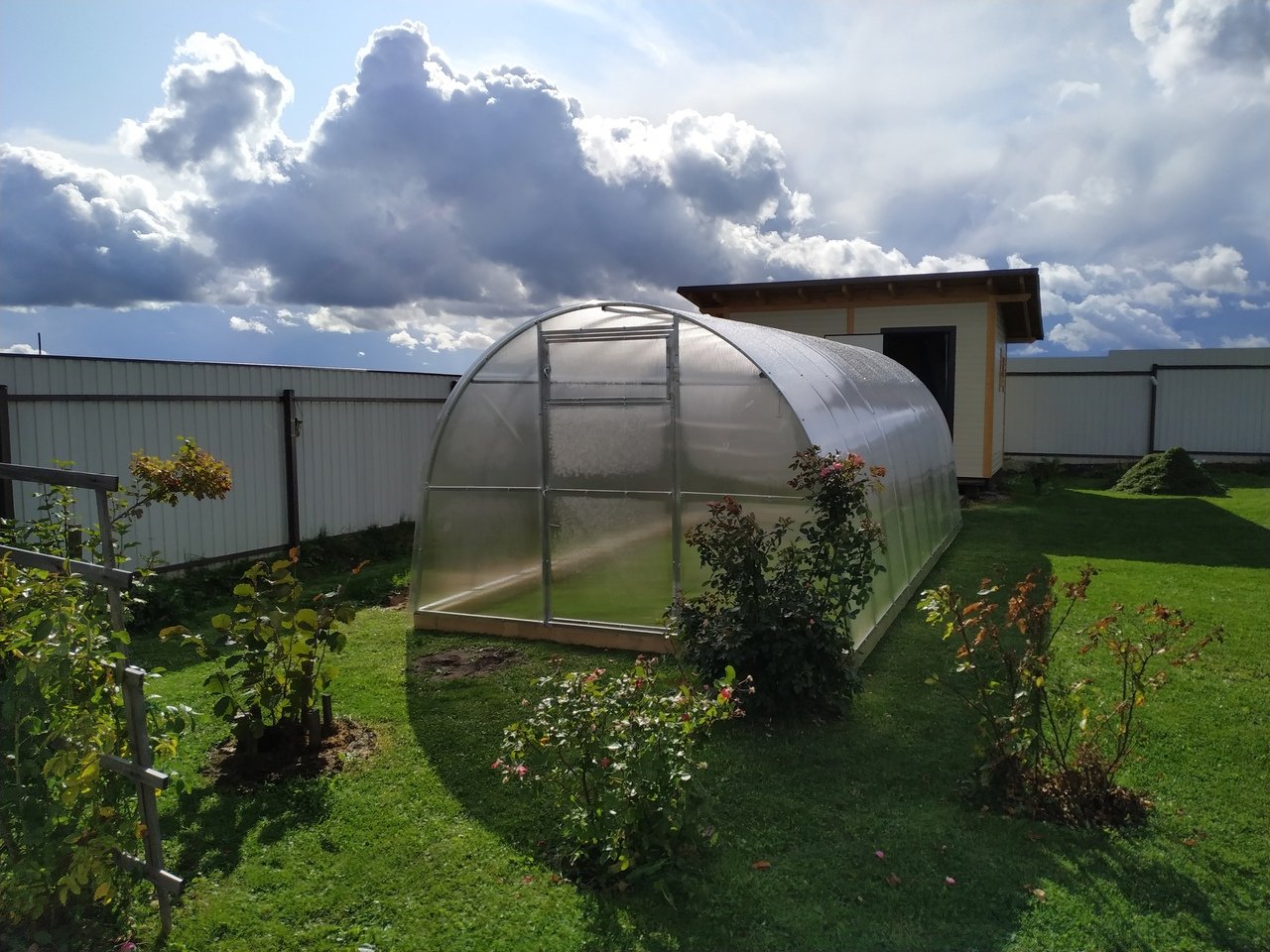
As you can see, there's no definitive answer to the question "which greenhouse shape is best?" Each design has its own strengths and weaknesses, and choosing the ideal option always involves finding the optimal balance between your needs, budget, the climate conditions of your region, and the technical specifications of the greenhouse itself.
Before making a final decision, carefully weigh the pros and cons, analyze the technical parameters of various designs, decide on the crops you plan to grow, and assess your budget. Don't be afraid to read reviews from other gardeners, consult with specialists and manufacturers. Pay attention to the quality of the frame materials (metal thickness, galvanization, quality of welds or fasteners) and the coating (polycarbonate thickness, presence of a UV protective layer, and its placement).
Remember that a properly selected and well-built greenhouse, suited to your needs and conditions, will be your reliable partner for years to come, allowing you to reap bountiful harvests and enjoy growing your favorite plants, regardless of the vagaries of the weather. The most important thing is that your greenhouse is not only functional and durable, but also brings you joy!





